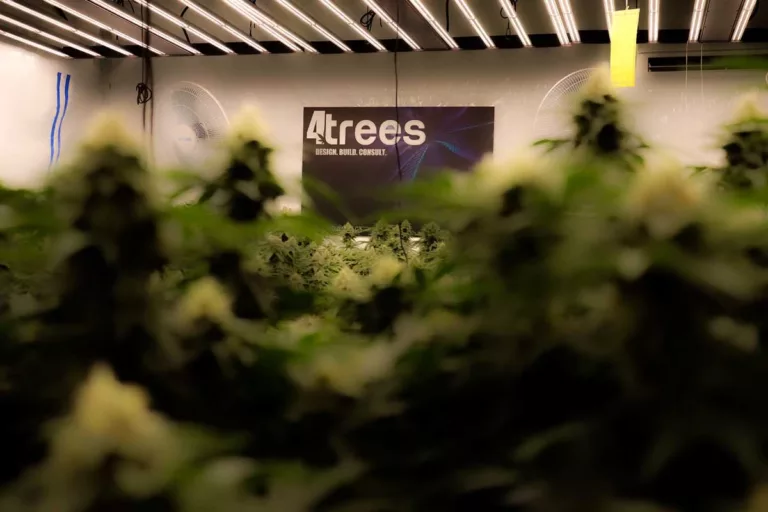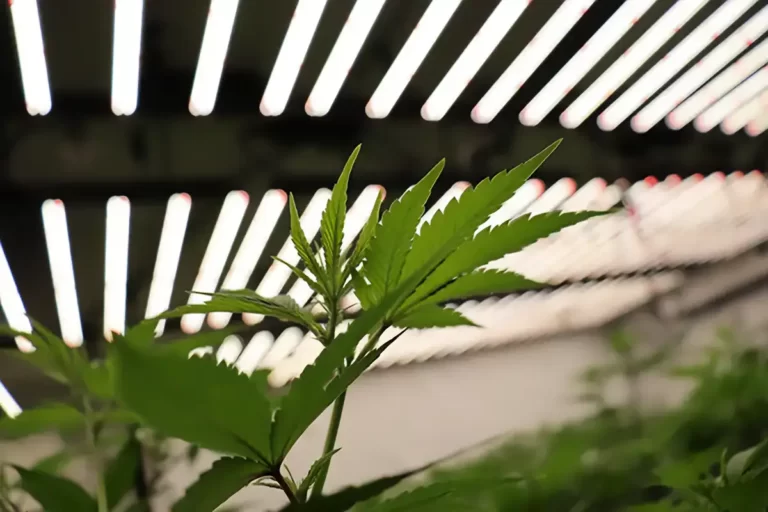How to Design The Perfect Grow Room Setup
Introduction
Are you looking to cultivate cannabis indoors? Creating a well-designed grow room setup is essential for optimizing plant growth, maximizing yields, and ensuring compliance with local regulations. In this article, we will explore the key aspects of designing a successful grow room and provide insights into the world of cannabis consulting. Let’s dive in and discover how to set up your ideal grow room.
How Should I Set Up My Grow Room?
Setting up a grow room requires careful planning and consideration. Here are some key steps to follow:
- Determine the available space: Assess the area where you plan to set up your grow room. Consider factors like dimensions, access to utilities, and potential obstacles.
- Plan the layout: Design the layout of your grow room to optimize space utilization. Consider factors like the number of plants, equipment placement, and workflow efficiency.
- Lighting systems: Choose the right lighting system based on your cultivation goals and budget. Options include high-intensity discharge (HID) lights, light-emitting diodes (LEDs), or a combination of both.
- HVAC considerations: Maintain optimal temperature and humidity levels in your grow room. Install heating, ventilation, and air conditioning systems to regulate these factors and ensure a comfortable environment for your plants.
- Automated hydroponics: Consider incorporating automated hydroponic systems for efficient nutrient delivery and water management. These systems can help streamline your cultivation process and maximize yields.
- Security measures: Implement robust security measures to protect your investment and ensure compliance with local regulations. Install surveillance cameras, access control systems, and alarms to safeguard your grow room.
What Do You Put on the Floor of a Grow Room?
The floor of your grow room plays a crucial role in maintaining a clean and hygienic environment. Here are some options to consider:
- Epoxy flooring: Epoxy coatings provide a seamless and durable surface that is easy to clean. They are resistant to spills, stains, and moisture, making them an excellent choice for grow rooms.
- Rubber mats: Rubber mats offer cushioning and protection for the floor. They are resistant to water and provide a comfortable surface to work on.
- Vinyl or linoleum flooring: These options are affordable, easy to clean, and resistant to moisture. They can be a practical choice for smaller grow rooms or temporary setups.

How Do I Ventilate My Grow Room?
Proper ventilation is crucial for maintaining a healthy grow room environment. Here’s how you can effectively ventilate your grow room:
- Intake and exhaust fans: Install fans to facilitate air exchange, ensuring a fresh supply of air and removing stale air and odors.
- Air filtration: Use carbon filters to eliminate odors and control the circulation of air within your grow room. This helps maintain a discreet and odor-free operation.
- Ducting: Connect fans, filters, and other ventilation components with ducting to create a well-connected system that effectively removes heat and humidity.
What is Best for Medical Grow Room Walls?
Choosing the right wall material for your grow room is important for insulation, reflectivity, and cleanliness. Consider the following options for medical grows:
- Reflective materials: Use reflective materials, such as mylar or white polyethylene sheets, to line your grow room walls. These materials help maximize light distribution and minimize hotspots.
- Paint: Consider using white or light-colored paint with a high reflective rating.
- Insulation: Insulate your grow room walls to maintain consistent temperatures and reduce energy consumption. Options like foam insulation or insulated panels can help create a thermally efficient environment.
What is Best for Recreational Grow Room Walls?
To meet GMP medical grade recreational facility standards, such as those for Micro Cultivation, Licensed Producer or Tier 1 – 3 facilities, it is mandatory to have complete wall coverings installed in all working areas.
- Medical Grade PVC wall paneling
Is It Better to Grow in a Tent or Room?
The choice between a grow tent and a dedicated grow room depends on your specific needs and constraints. Consider the following factors:
- Space limitations: Grow tents are ideal for small spaces or when portability is required. They offer a contained environment and are relatively easy to set up.
- Control and customization: A dedicated grow room allows for more flexibility in terms of layout, equipment selection, and environmental control. It is ideal for larger operations or those requiring specialized setups.
- Budget considerations: Grow tents are generally more cost-effective initially, but a well-designed grow room can offer long-term benefits and scalability.

Should I have a Fan in My Grow Room?
Yes, having fans in your grow room is crucial for maintaining airflow, preventing stagnant air pockets, and strengthening plant stems. Consider the following fan options:
- Oscillating fans: These fans provide gentle airflow, ensuring air circulation throughout your grow room. They help prevent heat buildup, reduce humidity, and strengthen plants.
- Inline fans: Inline fans are commonly used for ventilation purposes. They help remove stale air, control temperature and humidity, and assist in managing odors with carbon scrubbers.
- Wall fans: Wall mounted fans are commonly used in indoor grow rooms since they save space and can be hung at canopy height.
What is the Best Color for a Grow Room?
The best color for a grow room is white or reflective. White surfaces or reflective materials bounce light effectively, ensuring even light distribution across plants. This helps minimize hotspots and ensures that all parts of the plants receive adequate light for healthy growth. Matte white is known for its higher reflective properties.
Does a Grow Room Have to Be Air Tight?
While a grow room should have proper ventilation, it doesn’t need to be completely airtight. Controlled air exchange is crucial for maintaining optimal temperature, humidity, and carbon dioxide levels. However, it’s essential to seal any potential air leaks to prevent unwanted odors or pests from entering or escaping the grow room.
An optimal grow room will be as sealed as possible though to allow proper environmental control with little to no C02 loss.
Other key points to sealing your room are:
- Reduce unwanted light leaks as they can cause your plants to go hermaphrodite.
- Slows the risk of bugs or molds infesting your crop,
- Cheaper on HVAC energy costs.
- Ability to hold and maintain the desired humidity levels is much greater.
How Do I Keep My Grow Room Warm at Night?
To keep your grow room warm at night, consider the following strategies:
- Insulation: Ensure that your grow room is well-insulated to retain heat. Insulated walls, floors, and ceilings help maintain a stable temperature.
- Heating systems: Use heaters or heat mats to supplement warmth during colder nights. Select heaters that are safe for indoor use and have thermostatic controls to maintain consistent temperatures. * Important note: Shop heaters or infrared heaters will often create a red glow which is bad for grow rooms. Make sure to use a heat source that is not lighting the room up at night time.
Can You Use AC in a Grow Room?
Yes, air conditioning (AC) can be used in a grow room to regulate temperature and humidity levels. AC units help maintain a suitable climate, especially during hot summer months. It’s important to choose an AC unit that is appropriately sized for your grow rooms.
Although every grow rooms needs require different styles of HVAC systems, here are the most common HVAC styles for cannabis cultivation:
- Small Scale: For small operations like closets, small basement grows and grow tents a portable stand up AC unit is fine.
- Medium Scale: Larger grow rooms operating up to 20 HPS lights, or 50 LED lights can use mini-splits.
- Large Scale: Commercial operations running over 50 LED, or more than 20 HPS lights per room should go with VRF style HVAC units.
Contact one of the friendly HVAC technicians at 4trees Cannabis Building to go over your grow rooms HVAC needs if you have more questions.

Are Mini Splits Good for Grow Rooms?
Mini splits, also known as ductless air conditioning systems, can be an excellent choice for grow rooms. They offer energy-efficient cooling, customizable zoning, and precise temperature control. Mini splits are popular for their quiet operation and compact design, making them a suitable option for maintaining optimal climate conditions in grow rooms. Another great thing about ductless units is that they do not steal the C02 out of your room, or introduce bugs or molds.
Do Grow Rooms Need C02?
While not essential, adding carbon dioxide (CO2) supplementation to a grow room can enhance plant growth and yields, especially in larger-scale operations. CO2 supplementation promotes photosynthesis and boosts plant metabolism. However, it’s important to monitor and maintain proper CO2 levels to avoid negative effects on plant health.
Can a Grow Room Be Too Hot?
Yes, excessive heat can harm plants and negatively impact their growth. High temperatures can lead to heat stress, reduced nutrient uptake, and increased risk of pests and diseases. It’s crucial
to maintain optimal temperature ranges depending on the stage of plant growth, typically between 70°F to 85°F (21°C to 29°C).
How Long Will a 20 Pound C02 Tank Last in a Grow Room?
The duration of a 20-pound CO2 tank depends on factors such as the size of the grow room, CO2 supplementation rate, and ventilation. On average, a 20-pound CO2 tank can last for several weeks to a few months in a moderately sized grow room, assuming proper CO2 release and ventilation practices.
What is the Cheapest Way to Add C02 to a Grow room or Grow Tent?
The cheapest way to add CO2 to a grow room or grow tent is by using natural methods. For instance, you can enhance CO2 levels by allowing fresh air intake from outside during the day or using CO2-producing organic materials like compost or fermented extracts. However, it’s crucial to monitor CO2 levels and ensure proper ventilation to prevent CO2 buildup.

Can You Have Too Much Light in a Grow Room?
Yes, it is possible to have too much light in a grow room. Excessive light can lead to light burn, heat buildup, and increased stress on plants. However, its better to prepare for lots of light, and here’s why. Cannabis is one of the worlds most light hungry plants, although it may not want intense light as a young seed or early veg, it will later in flower! It’s important to determine the appropriate light intensity and duration based on the specific needs of your strains, health and stages and adjust accordingly. Contact 4trees for carefully dialed in lighting recipes, feed charts and more.
Can You Have Too Many Plants in a Grow Tent?
Having too many plants in a grow tent can lead to overcrowding, limited airflow, and increased competition for resources. It’s crucial to maintain adequate spacing between plants to allow for proper air circulation, light penetration, and access for maintenance tasks such as pruning and harvesting. Crowding your plants is an invitation for lower yields, pests and molds.
We hope this comprehensive guide has provided you with valuable insights into designing an efficient and productive grow room setup for cannabis cultivation. Whether you’re a novice grower or an experienced cultivator, careful planning, attention to detail, and consideration of your specific needs will help you create the ideal environment for successful indoor gardening. Happy growing!

